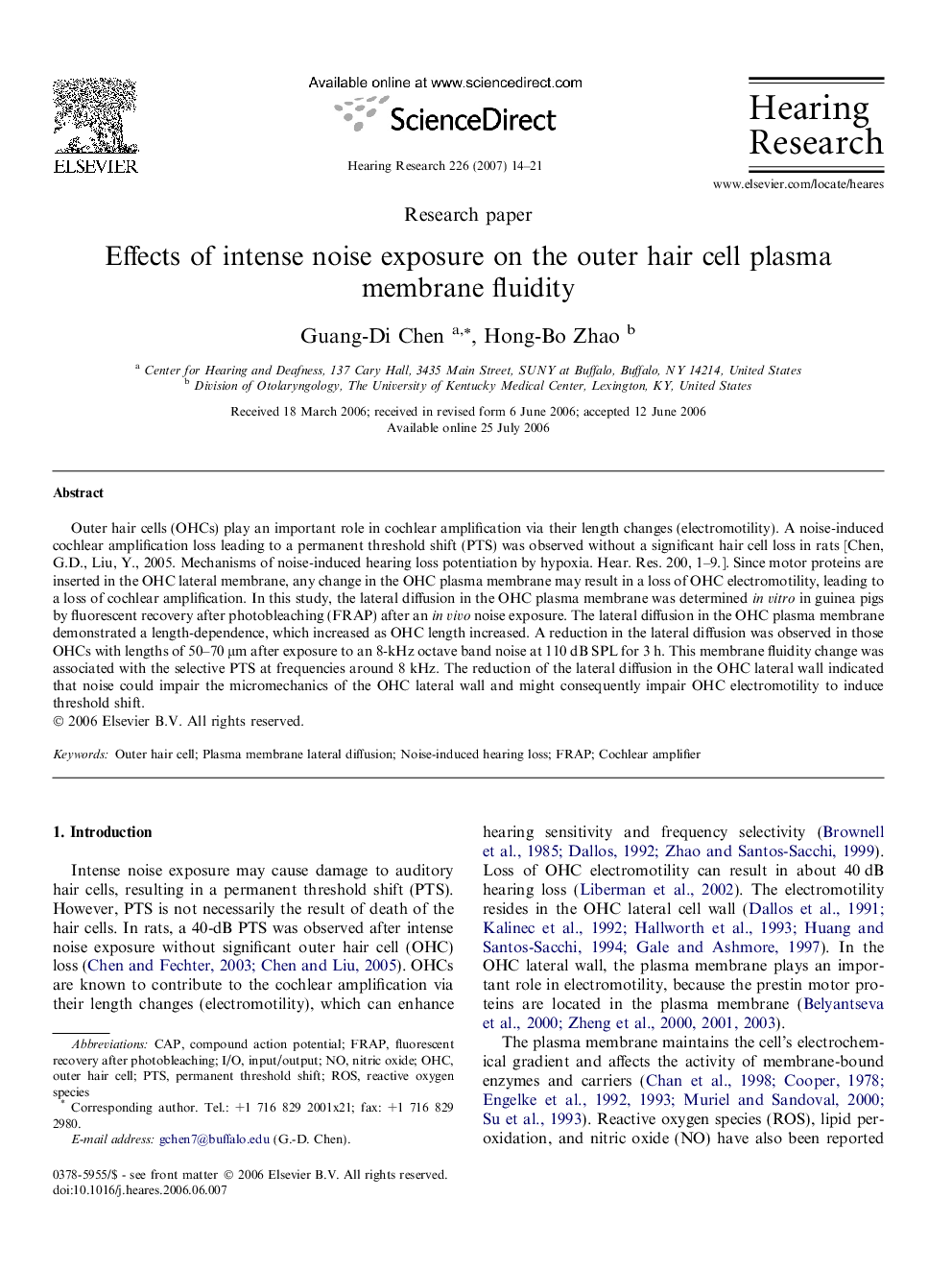| Article ID | Journal | Published Year | Pages | File Type |
|---|---|---|---|---|
| 4356316 | Hearing Research | 2007 | 8 Pages |
Outer hair cells (OHCs) play an important role in cochlear amplification via their length changes (electromotility). A noise-induced cochlear amplification loss leading to a permanent threshold shift (PTS) was observed without a significant hair cell loss in rats [Chen, G.D., Liu, Y., 2005. Mechanisms of noise-induced hearing loss potentiation by hypoxia. Hear. Res. 200, 1–9.]. Since motor proteins are inserted in the OHC lateral membrane, any change in the OHC plasma membrane may result in a loss of OHC electromotility, leading to a loss of cochlear amplification. In this study, the lateral diffusion in the OHC plasma membrane was determined in vitro in guinea pigs by fluorescent recovery after photobleaching (FRAP) after an in vivo noise exposure. The lateral diffusion in the OHC plasma membrane demonstrated a length-dependence, which increased as OHC length increased. A reduction in the lateral diffusion was observed in those OHCs with lengths of 50–70 μm after exposure to an 8-kHz octave band noise at 110 dB SPL for 3 h. This membrane fluidity change was associated with the selective PTS at frequencies around 8 kHz. The reduction of the lateral diffusion in the OHC lateral wall indicated that noise could impair the micromechanics of the OHC lateral wall and might consequently impair OHC electromotility to induce threshold shift.
